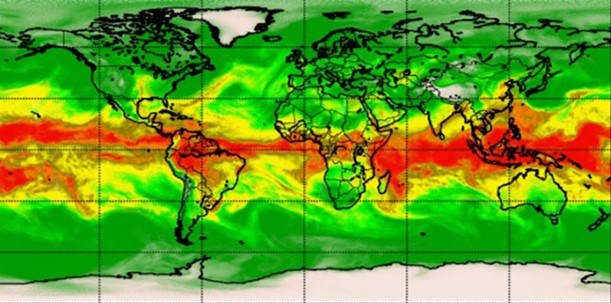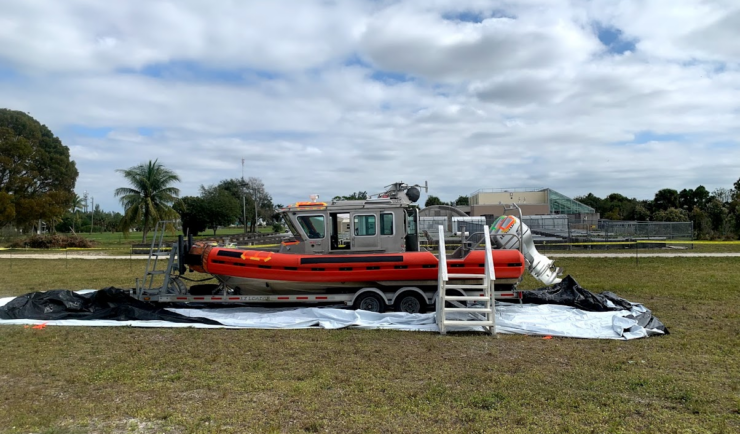- Community Spotlight, Uncategorized
- Environmental Resource Assessment & Management
Training Citizen Scientists on Identifying Harmful Phytoplankton Within their Communities

Since 2018, CSS employee owners have provided support to NOAA’s Phytoplankton Monitoring Network (PMN) program, which is managed out of NOAA’s National Centers for Coastal Ocean Science (NCCOS). NOAA’s Phytoplankton Monitoring Network provides a highly valued bridge between the public and aquatic ecosystem researchers. Through this program, citizen scientists collect water samples from their designated location at regular intervals, analyze them for phytoplankton, and log their findings in a national database. Participants in the program range from retired scientists, to concerned environmentalists, to those simply curious about their local waterways. Volunteers must participate in a NOAA-provided training to gain a highly specialized education in the world of microscopic phytoplankton, one that has been refined into digestible and understandable material regardless of the level of the participants’ scientific background. For this reason, the program has naturally resonated with marine educators and has been incorporated into high school, undergraduate, and even graduate level education programs.
CSS staff provide taxonomic and advanced microscopy support for this effort. When volunteers find difficult-to-identify phytoplankton, they send samples to the NOAA Hollings Marine Lab. CSS staff examine these samples using the NCCOS scanning electron microscope, a high powered microscope that provides extraordinary detail at a high level of magnification, allowing them to assess the tiny details needed to make these difficult identifications.

CSS staff were involved in supporting the creation of Aquaculture PMN, a new program that evolved out of the original Coastal PMN. Currently CSS staff support both programs by providing federal scientists with advanced taxonomic support regarding both imagery and samples generated by their volunteers, and provide guidance on how to incorporate advances in taxonomic knowledge into training material. While federal staff currently hold the main responsibility of interacting with volunteers, the CSS support scientist has engaged directly with College of Charleston students and other partner research groups for NOAA’s Hollings Marine Laboratory. In working with this partnership group, the CSS scientist is developing and providing advanced training materials for partners on using advanced microscopes at the Hollings Marine Lab and within their own facilities.

In March 2025, a CSS employee owner resumed the lead for responsibilities of the Aquaculture PMN Program. This new role entails guiding participating aquaculturists through adapting Coastal PMN protocols to better suit their questions and needs. This CSS scientist will specifically help participants understand how to more fully classify and categorize the plankton communities within their systems. This will help participants begin to understand the contributions those plankton communities make and evaluate the potential impacts and threat levels associated with harmful species, especially those that are harmful to cultured taxa but don’t necessarily have an associated human health implication, which is typically the plankton monitored by PMN.
Both the Coastal and Aquaculture PMN network have provided a boon for the harmful algal bloom (HAB) research community throughout U.S. waters and occasionally beyond. While HAB monitoring programs in the U.S. are generally run at the state level, one thing that most programs have in common is a lack of resources to support high frequency routine monitoring over a large area, a gap that NOAA’s PMN is filling. Cultivating a network of trained volunteers allows the PMN to help provide states with early warning of HAB events occurring in their waters that their own programs did not have the coverage to detect. It helps identify novel threats from HAB species and provide key insights into the diversity and distribution of potential toxin producing species for researchers to follow up on and study more intently.
Learn more about NOAA’s National Phytoplankton Monitoring Network.
See More CSS Insights

Advancing Severe Weather Predictions with Artificial Intelligence
As artificial intelligence (AI) and machine learning (ML) technologies evolve in Earth sciences, CSS employee owners (formerly Riverside staff) are growing our expertise in this field. CSS employee owners are advancing technologies for our client, NOAA’s Center for Satellite Applications and Research (STAR). Our staff have developed a framework, exploiting modern AI/ML techniques, to rapidly…
New Data and Reports on the U.S. Marine Economy
Each year CSS economists on contract with NOAA’s Office for Coastal Management work with other federal agencies to process the most recent economic and labor data, and extract the portions related to marine-dependent sectors.

Large-Scale Decontamination Proves Successful
In the spring of 2022, we worked with the U.S. Environmental Protection Agency and the U.S. Coast Guard on a project called Analysis for Coastal Operational Resiliency-Wide Area Demonstration (WAD) which tests large scale decontamination following the release of surrogate bioagents. The team conducted a WAD at a military base in Virginia to test decontamination…
